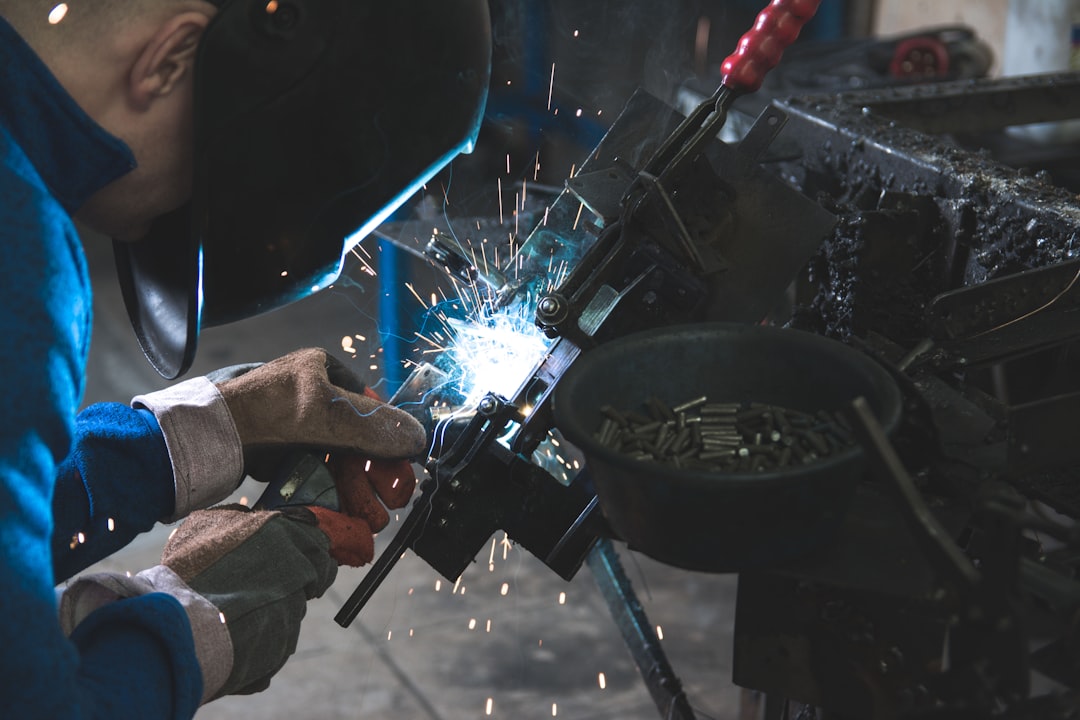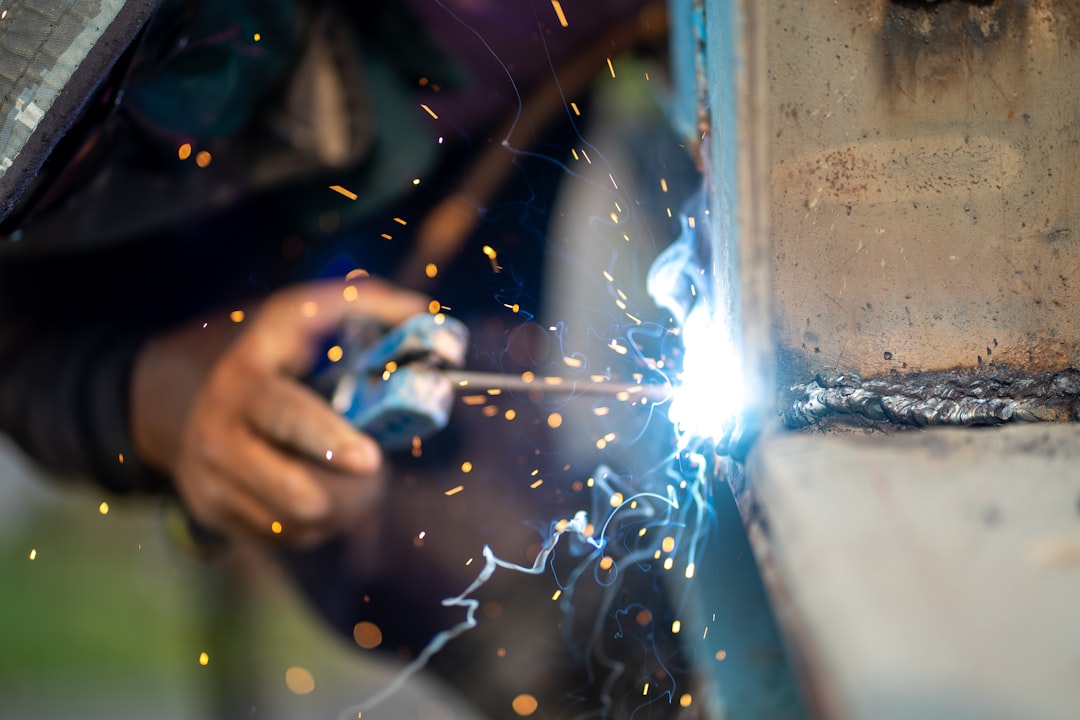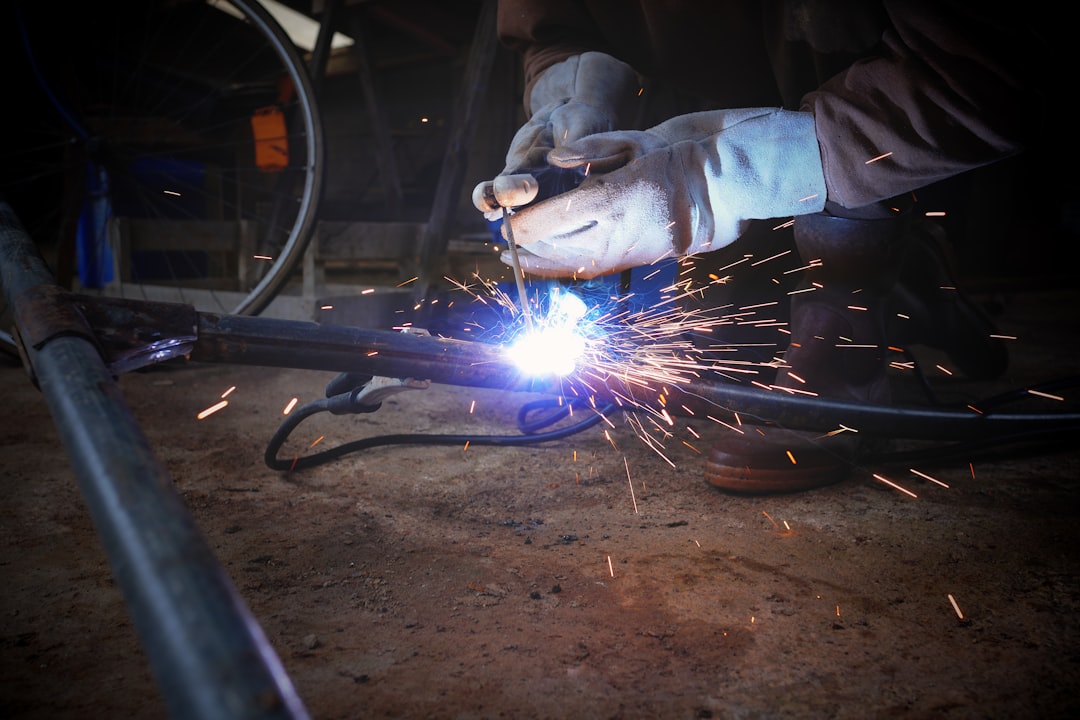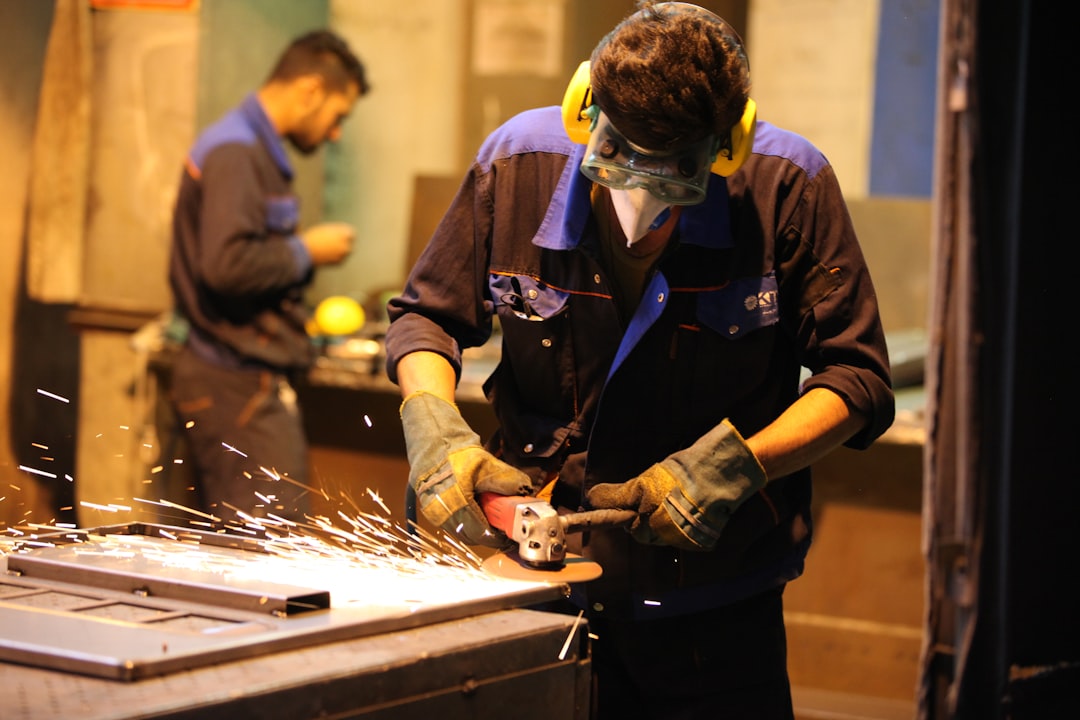

Engage prospects with a scan and streamline customer engagement with FREE QR code marketing tools by Sona – no strings attached!
Create a Free QR CodeFree consultation

No commitment

Engage prospects with a scan and streamline customer engagement with FREE QR code marketing tools by Sona – no strings attached!
Create a Free QR CodeFree consultation

No commitment
Quick response codes have evolved from a novelty to a strategic powerhouse for bridging offline engagement with online action. For welding equipment repair services, QR codes represent an efficient, cost-effective, and powerful way to streamline service requests, enable instant access to troubleshooting resources, and drive higher customer retention without any app downloads or complex setup. With a single scan, operators and maintenance managers can move from a physical issue to a digital solution that captures data, triggers workflows, and closes the loop faster.
Welding equipment downtime directly impacts productivity and profitability. Traditional printed manuals, outdated maintenance logs, and manual intake forms create unnecessary friction and slow down service delivery. High-value prospects and urgent service needs can slip through the cracks if they are not captured in a digital flow, resulting in lost opportunities and longer downtimes. QR codes bring these formerly untracked touchpoints into sharper focus, enabling swift access to repair histories, step-by-step guides, and streamlined quote requests so both technicians and customers can resolve issues faster and more accurately.
This article explores how welding equipment repair services can use QR codes to minimize downtime, deliver a modern service experience, and turn every machine or service interaction into a measurable, data-rich touchpoint for growth. It examines how solving common pain points such as missing anonymous traffic and outdated account data paves the way for smarter workflows and stronger business performance, all while improving workplace safety, compliance, and customer satisfaction.

Welding repair providers often face the frustration of missing high-value prospects who interact with their business but never formally request service, which makes it difficult to prioritize outreach or allocate resources. QR codes bridge the gap between physical touchpoints and digital outcomes by transforming untracked interactions into measurable data and actionable insights. When deployed thoughtfully across equipment, forms, and facilities, QR codes can accelerate repair cycles, reduce miscommunication, and ensure every scan becomes a signal you can act on.
To make QR codes work at scale, focus on replacing analog processes that stall momentum. Examples include converting paper service logs into mobile forms, replacing printed troubleshooting charts with interactive decision trees, and swapping phone-based booking with a self-service digital scheduler. The goal is to eliminate bottlenecks, standardize data capture, and give operators and techs a clear path to resolution in the fewest steps possible. Consider linking paperless intake to a Google Forms guide so teams can move to mobile forms quickly.
By digitizing these points of friction, QR codes make welding equipment repair services faster, smarter, and far less prone to lost or delayed service opportunities. The added benefit is a cleaner data foundation where service histories and customer intent signals are captured automatically, which informs staffing, inventory planning, and customer success programs.

Welding equipment repair services operate in an environment where timely information and seamless coordination are critical, yet a lack of visibility into anonymous interest remains a persistent challenge. Customers and operators often research repair solutions or maintenance schedules without ever submitting a form or calling a service line, which leaves their needs hidden and unaddressed. QR codes meet them exactly where the need emerges: on the machine, at the jobsite, inside the manual, or on a service report.
The value spans beyond convenience. QR codes provide a measurable path from physical surfaces to digital actions, giving service teams real-time visibility into who scanned, what they needed, and how to respond. From appointment cards to equipment decals, the technology transforms once-invisible touchpoints into concrete opportunities for better customer experience and operational efficiency.
Applying these capabilities to welding repair brings clarity to chaotic situations, from urgent jobsite breakdowns to scheduled overhauls. The result is a smoother experience for operators and a more predictable workflow for service providers.

Repair teams juggle manuals, service forms, training videos, and contact details, yet keeping that content current has been a longstanding problem. QR codes address this challenge by linking the right format to the right destination so technicians and customers get what they need without friction. For welding service operations, a handful of formats stand out as particularly useful.
Dynamic QR codes are especially important because they allow you to update destinations as procedures evolve, parts stock shifts, or seasonal campaigns roll out. This keeps your information accurate without reprinting labels or stickers and ensures that scan data flows into the same analytics source of truth.
Dynamic formats managed in a platform such as Sona QR make it simple to edit destinations, attach UTM parameters, and track scans by equipment type, location, and campaign. This centralization keeps account data complete and improves decision-making across service, sales, and marketing.

Opportunities for improvement in welding equipment repair are often buried in disconnected processes and missed engagement points. QR codes help capture in-the-moment demand and context wherever it appears so nothing falls through the cracks. When you embed scannable entry points in the places where work happens, you reduce downtime and increase customer trust.
Think beyond the obvious decal on a machine. Consider the entire lifecycle of a repair: installation, daily use, inspection, servicing, parts replacement, and compliance audits. Each stage presents a chance to add a QR code that shortens the path to action and feeds your analytics.
Every physical asset, from equipment to paperwork, becomes an onramp to a digital journey. The key is to align each placement with a clear call to action so scanners know exactly what happens next.

Even capable providers miss engagement signals when they rely on paper logs or one-off phone calls. QR-enabled workflows ensure that customer intent, service requests, and follow-up opportunities are captured at the source. The right deployment helps technicians respond faster, gives managers better visibility, and gives customers a modern experience.
Below are core use cases aligned to common interactions across welding shops, fabrication facilities, and field service operations. Each is designed to reduce time to resolution and improve the quality of the data you collect along the way.
These use cases increase first-contact resolution rates and help your team prioritize high-impact work. They also create a rich dataset you can use to anticipate demand, optimize inventory, and refine your service plans.
Each scan is a signal. When QR codes are deployed across equipment, signage, packaging, and paperwork, you collect intent, context, and timing that can fuel precision retargeting and follow-up. Instead of treating all requests equally, you can tailor communication by urgency, equipment type, or service history, which improves outcomes and lowers costs. Learn how to harness intent data to improve segmentation and outreach.
Welding service providers benefit from segmenting by role as well as by technical context. An operator requesting a quick fix, a maintenance manager scheduling a quarterly service, and a procurement lead researching parts are three very different journeys. QR data helps you recognize each and respond accordingly.
Industry-specific segments to consider include operator vs maintenance manager vs procurement, MIG vs TIG vs plasma equipment owners, warranty vs out-of-warranty assets, and emergency repair vs preventive maintenance. With Sona QR, each code becomes a smart entry point that organizes this data automatically and keeps your follow-ups timely and relevant.
QR codes function as connectors between offline and online campaigns, turning static assets into interactive pathways that collect useful data. In welding repair services, this means brochures that book inspections, invoices that route to parts reorders, and trade show demos that convert into scheduled site surveys. The payoff is strong because it links moments of interest to immediate next steps.
When you centralize code creation and analytics, you also learn which channels pull their weight. If jobsite signage scans generate more urgent tickets than direct mail, you can allocate budget and staffing accordingly. A connected approach raises conversion rates while keeping messages consistent.
With a centralized platform like Sona QR product, you can manage codes for all channels in one place, monitor performance by asset and audience, and sync scan data with your CRM and ad platforms. This unified view makes it easier to coordinate messaging and to double down on tactics that drive revenue.
Successful QR deployments follow a repeatable process that ties each code to a clear business outcome. For welding repair services, that means setting a goal such as reducing average turnaround time or increasing scheduled maintenance conversions, then building a campaign that aligns design, placement, and tracking with that goal.
Use the following steps to plan, launch, and optimize your QR initiatives. Each step includes practical considerations for the welding environment, including rugged surfaces, variable lighting, and role-specific calls to action.
Start by defining what you want the scan to accomplish. Common goals include urgent repair intake, scheduled maintenance bookings, parts reorders, training sign-offs, and warranty activations. Selecting one clear action per code keeps experiences fast and focused.
Choose between static and dynamic codes based on your need for flexibility and analytics. In most welding service scenarios, dynamic codes win because content, inventories, and processes change frequently.
Design choices can make or break scannability, especially in harsh shop conditions. Prioritize clarity and contrast, and test in real environments before wide release.
Roll out codes where operators and decision-makers already engage. Combine equipment decals with shop signage, service paperwork, packaging, and direct mail to create multiple entry points into the same workflow.
Measurement turns scans into revenue. Monitor performance, identify drop-offs, and refine creative, placement, or destinations based on real data.
This checklist ensures that missed opportunities are systematically addressed rather than left to chance. By tying each code to a purpose and measuring outcomes, you build a repeatable engine for uptime and customer satisfaction.
Welding equipment repair is a high-stakes field where missing account-level data or failing to surface timely engagement signals can directly impact profit and loyalty. Tracking every scan by equipment type, operator role, location, and time transforms invisible activity into actionable insights. With the right instrumentation, you can connect scans to bookings, bookings to jobs, and jobs to revenue.
The analytics discipline is as important as the QR deployment itself. Without attribution, it is hard to know which placements or messages work, whether urgent cases are handled promptly, and how parts consumption correlates with scan behavior. A unified platform such as Sona QR and Sona closes these gaps. For measurement strategy across channels, see Sona on offline attribution and account identification.
Sona QR captures real-world engagement and Sona.com connects that engagement to pipeline and revenue with identity resolution and multi-touch attribution. Together they provide a complete picture of progression from first scan to successful repair, giving you the confidence to scale what works.
Scaling QR campaigns requires a blend of smart design, field-ready deployment, and automation on the back end. The most successful welding service providers treat QR codes as part of a broader customer journey, not as one-off conveniences. They also train their teams to promote scanning and to explain the benefits clearly.
Use the following best practices to improve scan rates and ROI. Each tip is aligned to the physical media and workflows common in welding repair environments.
Creative deployments include QR codes on welding booth partitions that open to safety refreshers before each shift, and scannable inventory racks that automate consumable reorders. You can Start creating QR codes for free and be live in minutes.
Process bottlenecks and disconnected customer journeys remain persistent challenges for welding equipment repair services. QR codes are more than a shortcut, they are a foundation for transforming manual workflows, surfacing new service opportunities, and bringing account-level visibility to every engagement. The right strategy turns equipment, paperwork, and signage into digital entry points that reduce downtime and kick off automated, data-rich workflows.
Here is what this approach delivers at a glance. You get instant engagement across service and repair touchpoints, from equipment decals to jobsite signage, which reduces missed opportunities from untracked interactions. You deliver a connected, digital-first customer experience that supports upsell and retention by surfacing engagement signals in real time. You gain data-driven insight that ensures every service action is measurable, attributed, and optimized for revenue and satisfaction.
Forward-thinking welding repair providers are using QR codes to eliminate bottlenecks, reduce downtime, and enhance customer relationships. By turning every machine, invoice, and service call into a digital action point, QR campaigns measurably improve productivity and profitability. With Sona QR product, you have everything needed to capture demand at the source, connect scans to outcomes, and scale what works across your entire operation.
QR codes have revolutionized the welding equipment repair services industry by transforming traditional maintenance processes into seamless, data-driven interactions. They enable technicians and customers to instantly access repair histories, instructional content, and service schedules, delivering faster diagnostics and improved equipment uptime. Imagine a world where every scan provides real-time insights into equipment status, helping you reduce downtime and enhance customer satisfaction effortlessly.
With Sona QR, you gain the power to create dynamic, trackable QR codes that can be updated instantly without reprinting, ensuring your repair teams and clients always have the latest information at their fingertips. This not only streamlines repair workflows but also drives customer acquisition by offering transparent, high-value service experiences that build trust and loyalty. Start for free with Sona QR today and turn every scan into a faster repair, a satisfied customer, and a stronger bottom line.
Use QR codes on equipment and service materials to access verified repair providers, schedule services instantly, and view repair histories for trusted service options.
Common issues include faults with MIG welders, plasma cutters, voltage inconsistencies, liner replacements, and gas flow problems that can be troubleshot using QR-linked interactive guides.
The article does not specify average costs for welding equipment repair services.
Prevent frequent repairs by using QR codes to access digital maintenance logs, schedule preventive maintenance, follow safety and troubleshooting guides, and reorder compatible parts promptly.
Signs include equipment faults indicated by error codes, failure to operate properly, and issues identified via QR code-triggered diagnostic checklists and troubleshooting workflows.
QR codes streamline service requests, provide instant access to troubleshooting resources, digitize manual processes, capture data for analytics, reduce downtime, and enhance customer experience without complex setups.
Place QR codes on equipment decals, jobsite signage, service reports, parts packaging, direct mail, and training materials to enable quick access to repair requests, maintenance logs, and safety resources.
Dynamic QR codes are preferred because they allow updating destinations, tracking scans, and managing content changes without reprinting, while static codes suit fixed, rarely changing content.
They use analytics platforms to monitor scan volume by time, location, and asset, attribute scans to channels, perform A/B testing, and sync data with CRMs to improve staffing, inventory, and outreach.
Use cases include QR-enabled repair requests, digital maintenance logs, instant troubleshooting guides, parts reordering, training and safety resource access, and warranty activations.
Use Sona QR's trackable codes to improve customer acquisition and engagement today.
Create Your FREE Trackable QR Code in SecondsJoin results-focused teams combining Sona Platform automation with advanced Google Ads strategies to scale lead generation

Connect your existing CRM

Free Account Enrichment

No setup fees
No commitment required

Free consultation

Get a custom Google Ads roadmap for your business






Launch campaigns that generate qualified leads in 30 days or less.
